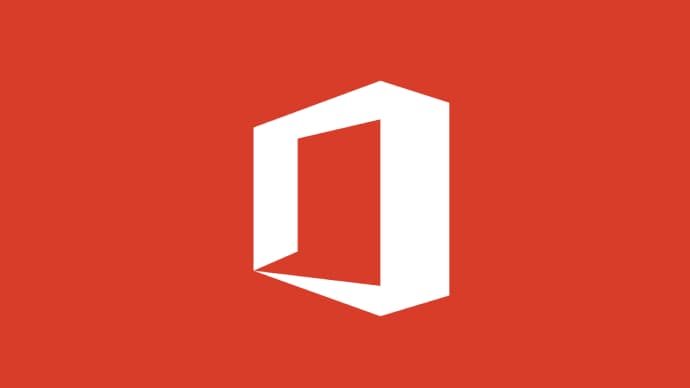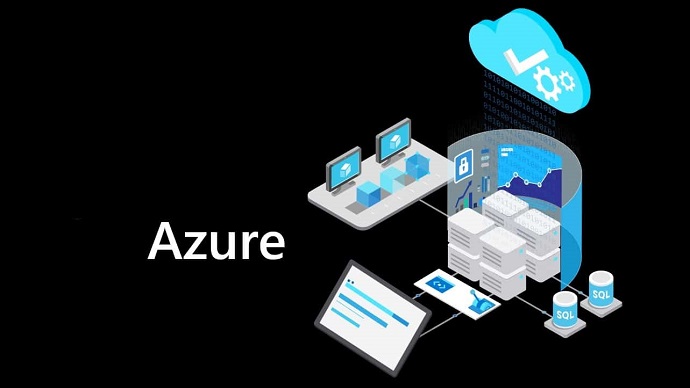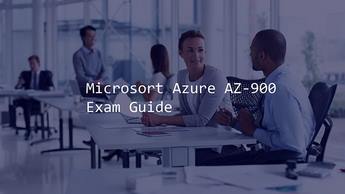Use VCE Exam Simulator to open VCE files

FCP_WCS_AD-7.4 Fortinet Practice Test Questions and Exam Dumps
You intend to deploy the Fortinet High Availability (HA) CloudFormation template to stage and bootstrap the FortiGate configuration within the same region where you created your VPC, which is located in Ohio (US-East-2). Based on this,
Which of the following statements is accurate?
A. You need to create an S3 bucket to stage and bootstrap the FortiGate with an FGCP unicast configuration. The S3 bucket can be in any region.
B. The Fortinet HA CloudFormation template will automatically create an S3 bucket for you.
C. You need to create an S3 bucket to stage and bootstrap the FortiGate with an FGCP unicast configuration. The S3 bucket must be in the Ohio US-East-2 region.
D. You must create a DynamoDB instance to stage and bootstrap the FortiGate with an FGCP unicast configuration. It must be in the Ohio US-East-2 region.
Answer: C. You need to create an S3 bucket to stage and bootstrap the FortiGate with an FGCP unicast configuration. The S3 bucket must be in the Ohio US-East-2 region.
Explanation:
When deploying Fortinet’s FortiGate HA CloudFormation template in an AWS environment, it is necessary to configure the system so that the FortiGate appliance is bootstrapped properly, including its configuration for High Availability (HA). In this case, the process involves staging and bootstrapping the FortiGate configuration, which requires an S3 bucket to store configuration files and other necessary bootstrap files.
The correct answer is C, which specifies that the S3 bucket used for staging and bootstrapping the FortiGate configuration must be in the same region as the VPC (Ohio US-East-2 in this case). This requirement ensures that the deployment process can efficiently access resources within the same region. Cross-region data access can introduce delays and complications, especially when dealing with cloud-native services like AWS VPCs, so it is best practice to keep resources in the same region to avoid such issues.
Now, let's review the other options:
Option A (S3 bucket in any region): This option is incorrect because, as mentioned above, the S3 bucket should be in the same region as the VPC for optimal performance and resource accessibility. Storing the S3 bucket in a different region would increase latency and could complicate the process.
Option B (Automatic creation of an S3 bucket): This option is also incorrect. The Fortinet HA CloudFormation template does not automatically create the S3 bucket. The user must manually create it and ensure it is properly configured to hold the necessary files for bootstrapping the FortiGate appliance.
Option D (Using DynamoDB for bootstrapping): This is an incorrect statement. While DynamoDB is a managed NoSQL database service by AWS, it is not used for staging or bootstrapping FortiGate appliances. Instead, an S3 bucket is required to hold the configuration files. DynamoDB may be used in other parts of an AWS architecture, but not for this specific use case.
In summary, creating an S3 bucket in the same region as the VPC is required for a successful deployment of the FortiGate HA CloudFormation template, ensuring smooth staging and bootstrapping of the configuration.
An organization needs to establish a connection between a data VPC and the on-premises infrastructure of a branch office in a hybrid cloud environment. The connection needs to provide high bandwidth but the organization does not want to use multiple connections between the two sites.
Which AWS solution would best meet the organization’s requirements?
A. Transit VPC with IPSec
B. Internet Gateway
C. Transit Gateway Multicast
D. Transit Gateway Connect
Answer: D. Transit Gateway Connect
Explanation:
In a hybrid cloud environment, establishing secure and high-bandwidth connectivity between an organization's data VPC and on-premises infrastructure is crucial. AWS offers several solutions that enable seamless connectivity between the cloud and on-premises networks. The solution selected must meet the organization’s requirement of providing higher bandwidth without the need to manage multiple connections between the sites.
The correct answer is D, Transit Gateway Connect. This solution provides a high-bandwidth, single connection between on-premises infrastructure and AWS VPCs through AWS’s Transit Gateway. The Transit Gateway Connect attachment is designed specifically to handle high-bandwidth requirements for hybrid cloud architectures. It allows seamless integration of on-premises networks with the AWS Cloud using a single connection between your VPC and on-premises network. This solution reduces the complexity of managing multiple connections and provides a simplified, centralized approach to connecting your on-premises infrastructure with your VPCs. The connection is highly scalable and cost-effective, as it consolidates networking requirements into a unified service.
Let’s go through the other options:
Option A (Transit VPC with IPSec): A Transit VPC is a method of using a dedicated VPC to route traffic between multiple VPCs and on-premises locations. It uses IPSec tunnels to secure data transfer. While this setup is viable for some use cases, it typically involves multiple connections for each VPC, which contradicts the requirement to avoid managing multiple connections. Additionally, this solution is less scalable and could become complex for organizations with numerous VPCs and branch offices.
Option B (Internet Gateway): An Internet Gateway is used to allow communication between a VPC and the internet. While it facilitates connectivity for public-facing resources in the VPC, it is not suitable for establishing a secure or high-bandwidth connection between AWS and on-premises infrastructure. It does not address the hybrid cloud connectivity requirements outlined in the question.
Option C (Transit Gateway Multicast): Transit Gateway Multicast is an advanced feature that enables multicast communication across multiple VPCs and on-premises networks. While useful for specific use cases like streaming data to multiple destinations, multicast is typically not used for direct hybrid cloud connections to meet high bandwidth and simplified connectivity requirements. It adds complexity that is unnecessary for the current scenario.
The AWS Transit Gateway Connect solution allows organizations to extend their on-premises network into the AWS Cloud using a single, high-bandwidth connection. It supports direct routing between on-premises networks and multiple AWS VPCs, which provides the required scalability and simplified management. The key advantage is that it reduces the operational overhead of managing multiple connections and ensures that hybrid cloud environments benefit from high-performance, low-latency network connections.
In summary, for an organization that requires a high-bandwidth connection between its data VPC and on-premises infrastructure without managing multiple connections, Transit Gateway Connect is the most efficient and scalable solution.
A customer has set up a Gateway Load Balancer (GWLB) between their partner and application VPCs. FortiGate appliances are deployed within the partner VPC across multiple Availability Zones (AZs) to inspect traffic transparently. Based on this GWLB deployment,
Which two outcomes will occur for application traffic? (Choose two.)
A. Inbound and outbound traffic will be distributed to multiple devices, performing load balancing.
B. Inbound and outbound traffic will be directed to a single device, which will handle stateful processing.
C. The content of the original traffic between the GWLB and FortiGate will remain unchanged.
D. The original traffic exchanged between the GWLB and FortiGate will be hashed to ensure data integrity.
Correct Answer:
A. Inbound and outbound traffic will be distributed to multiple devices, performing load balancing.
B. Inbound and outbound traffic will be directed to a single device, which will handle stateful processing.
Explanation:
When you deploy Gateway Load Balancer (GWLB), it acts as a transparent traffic manager for inspection services, such as FortiGate, across your network. It allows traffic between VPCs to pass through appliances like FortiGate for inspection, without the traffic being intercepted or altered by other network devices.
Option A is correct because GWLB distributes both inbound and outbound traffic to multiple FortiGate appliances across different Availability Zones (AZs). This enables the GWLB to perform load balancing, ensuring traffic is efficiently processed across the available appliances. This distribution helps in scaling the traffic processing across multiple appliances, increasing overall availability and performance.
Option B is also correct because stateful processing is a key feature of FortiGate appliances. Stateful processing means that traffic will be directed to a single FortiGate appliance at any given time for each flow, ensuring that the appliance is aware of the state of the connection and can enforce security policies accordingly. This method is crucial for maintaining the integrity of sessions and providing consistent protection against threats.
Now, let’s analyze the other options:
Option C is incorrect. GWLB does not preserve the content of the traffic in a "transparent" manner. While it does pass traffic to the appliances for inspection, the content of the traffic may be altered for the inspection process or due to encryption/decryption by FortiGate.
Option D is incorrect. The hashing of traffic for data integrity is not a primary function of GWLB or FortiGate in this scenario. GWLB focuses on distributing traffic, while FortiGate appliances perform the actual inspection and security processing, but not specifically hashing for data integrity.
Which two statements about the FortiCloud portal are true? (Choose two.)
A. You can gain remote access to your FortiGate VM directly from the portal.
B. To assign permissions in the identity and access management (IAM) portal, you must write a JSON script.
C. You can access the FortiFlex portal only after purchasing a FortiFlex license and registering it on FortiCare.
D. You can access only cloud services that you have subscribed to in the AWS Marketplace.
Correct Answer:
C. You can access the FortiFlex portal only after purchasing a FortiFlex license and registering it on FortiCare.
D. You can access only cloud services that you have subscribed to in the AWS Marketplace.
Explanation:
FortiCloud is Fortinet's cloud management platform designed for managing and monitoring Fortinet devices and services. It provides a centralized portal where users can manage their FortiGate appliances, access reports, and configure security services.
Option C is correct because FortiFlex is a Fortinet cloud service that offers flexibility in purchasing and managing subscriptions. To access the FortiFlex portal, you must first purchase a FortiFlex license and register it in FortiCare, which is Fortinet’s support and service platform. Once registered, users can manage their subscription and deploy services from the FortiFlex portal.
Option D is correct because the FortiCloud portal provides access to services that users have subscribed to, including those available through the AWS Marketplace. You can only access those cloud services within the portal that are part of your subscription or purchase, which includes Fortinet services offered through the AWS Marketplace.
Now, let’s look at the other options:
Option A is incorrect. While the FortiCloud portal allows for centralized management, remote access to a FortiGate VM is not directly facilitated via the portal. Instead, management interfaces or other remote access tools are used for that purpose.
Option B is incorrect. You don’t need to write a JSON script to assign permissions in the Identity and Access Management (IAM) portal. While JSON scripts are used in AWS for defining policies, FortiCloud’s IAM interface is more user-friendly and does not require direct scripting for permission management.
Which three statements accurately describe the FortiGate Cloud-Native Firewall (CNF)? (Choose three.)
A. It provides carrier-grade protection.
B. It scales seamlessly.
C. It uses AWS Elastic Load Balancing (ELB).
D. It is considered a Firewall-as-a-Service (FWaaS).
E. It can be managed by FortiManager and AWS Firewall Manager.
Correct Answer:
B. It scales seamlessly.
D. It is considered a Firewall-as-a-Service (FWaaS).
E. It can be managed by FortiManager and AWS Firewall Manager.
Explanation:
The FortiGate Cloud-Native Firewall (CNF) is a fully managed firewall solution designed to work seamlessly within cloud environments, particularly in AWS, for securing cloud-native applications and infrastructures.
Option B is correct. The FortiGate CNF is designed for cloud scalability, meaning it can grow or shrink automatically based on the demands of the environment. This capability allows it to handle varying traffic volumes efficiently, which is a key characteristic of cloud-native services.
Option D is correct. The FortiGate CNF is categorized as Firewall-as-a-Service (FWaaS), which means it is offered as a fully managed service, rather than a traditional physical or virtual appliance. This service is designed to provide consistent and efficient security for cloud applications without the need for manual configuration and management.
Option E is correct. The FortiGate CNF can be managed both through FortiManager and AWS Firewall Manager. FortiManager provides centralized management for Fortinet devices, including the FortiGate CNF, while AWS Firewall Manager enables centralized control and security policy enforcement across multiple AWS accounts.
Now, let's review the other options:
Option A is incorrect. While the FortiGate CNF provides robust protection, including next-gen firewall capabilities, it is not specifically designed for carrier-grade protection. Carrier-grade protection typically refers to high-throughput, large-scale services that require very specific hardware and software configurations. The FortiGate CNF is focused on cloud-native environments.
Option C is incorrect. AWS Elastic Load Balancing (ELB) is a service that automatically distributes incoming application traffic across multiple targets. While FortiGate CNF can be part of an architecture that uses ELB, the CNF itself does not directly use ELB. The primary function of FortiGate CNF is to secure traffic in cloud-native environments.
AWS native network services provide a wide array of functionalities and seamless connectivity between cloud and on-premises networks.
What are three additional features that FortiGate for AWS can offer to complement AWS's native network services? (Choose three.)
A. Higher VPN throughput
B. Web filtering
C. OSPF over IPSec
D. Advanced dynamic routing
E. Secure SD-WAN with application visibility
Correct Answer:
A. Higher VPN throughput
B. Web filtering
E. Secure SD-WAN with application visibility
Explanation:
FortiGate for AWS adds critical security and network optimization capabilities that complement the native AWS services, which are generally focused on providing basic networking, routing, and VPN functionality. FortiGate enhances security and network performance through additional services.
Option A is correct. Higher VPN throughput is one of the key advantages of using FortiGate in AWS. While AWS provides basic VPN capabilities, FortiGate can deliver enhanced throughput for both site-to-site VPNs and client VPNs. This is especially important for enterprises with high traffic volumes or complex VPN requirements that AWS’s native services might not be optimized for.
Option B is correct. Web filtering is another significant advantage offered by FortiGate. AWS’s native network services lack the depth of web filtering capabilities. FortiGate’s advanced web filtering allows administrators to enforce strict web access controls, block malicious websites, and ensure compliance with security policies. This is a critical feature for organizations that need enhanced visibility and control over user web traffic.
Option E is correct. Secure SD-WAN with application visibility is a key feature of FortiGate for AWS. FortiGate enables SD-WAN functionality, which is especially beneficial for organizations with multi-cloud or hybrid cloud environments. It provides application visibility, optimizing application performance and securely directing traffic based on real-time network conditions, such as latency, jitter, or packet loss. This feature complements AWS's cloud-based services by ensuring high-performance networking, especially for distributed teams and cloud-based applications.
Now, let's explore the other options:
Option C is incorrect. While OSPF over IPSec is a feature that can be implemented using FortiGate’s advanced routing capabilities, it is not unique to AWS deployments. It is not a key complement to the AWS native network services, which primarily focus on simpler IP routing and VPN functionality.
Option D is incorrect. Advanced dynamic routing is a fundamental feature in AWS using services like Amazon Route 53, but FortiGate does not directly add significant value over what AWS already offers for dynamic routing. While FortiGate can perform dynamic routing using protocols like OSPF and BGP, AWS’s native tools (such as Transit Gateway and Direct Connect) typically cover most use cases for advanced routing in cloud environments.
Your organization is evaluating whether to deploy an active-active (A-A) or active-passive (A-P) FortiGate high availability (HA) cluster in the AWS cloud.
Which two statements are correct when comparing A-A clusters with A-P clusters? (Choose two.)
A. For A-A clusters, FortiGate must perform SNAT inbound to ensure symmetric traffic flow.
B. A-A clusters rely on API calls for failovers.
C. A-A clusters always require a load balancer.
D. A-A clusters can use a software-defined network (SDN) to perform a failover.
Correct Answer:
A. For A-A clusters, FortiGate must perform SNAT inbound to ensure symmetric traffic flow.
D. A-A clusters can use a software-defined network (SDN) to perform a failover.
Explanation:
High Availability (HA) clusters in AWS for FortiGate can be deployed in two primary configurations: active-active (A-A) and active-passive (A-P). Both of these configurations have distinct advantages and considerations based on the deployment needs of the organization, especially when scaling and ensuring high availability of critical services.
Option A is correct. In active-active (A-A) clusters, symmetric traffic flow is required for maintaining proper session handling and load balancing. FortiGate uses Source Network Address Translation (SNAT) to ensure that inbound traffic is correctly distributed and routed to the active instance in the A-A cluster. Without SNAT, traffic could be directed to different FortiGate appliances, causing session mismatches and connectivity issues. SNAT helps maintain session consistency by routing the traffic to the appropriate device.
Option D is correct. One of the benefits of A-A clusters is the ability to use Software-Defined Networking (SDN) to automate failover and scale the network. In an A-A setup, SDN allows for more flexible traffic routing and failover mechanisms. It allows for dynamic scaling and automated failover in case of appliance failure or performance degradation, which is essential for maintaining network performance and security in the cloud.
Now, let’s examine the other options:
Option B is incorrect. While API calls are often used for managing FortiGate appliances in AWS, they are not a critical requirement for failovers in an A-A cluster. Failover in FortiGate’s A-A cluster is typically based on state synchronization between appliances and does not require API calls. Failover happens automatically if the primary appliance fails, and the secondary appliance takes over.
Option C is incorrect. A-A clusters do not always require a load balancer. While a load balancer can be used to distribute traffic between multiple instances of FortiGate, it is not a strict requirement. FortiGate appliances in an A-A cluster communicate directly with each other for session synchronization and traffic management. In many AWS architectures, the traffic is routed directly to the FortiGate appliances, bypassing the need for an additional load balancer.
Related Exams

Top Training Courses











SPECIAL OFFER: GET 10% OFF
This is ONE TIME OFFER

A confirmation link will be sent to this email address to verify your login. *We value your privacy. We will not rent or sell your email address.
Download Free Demo of VCE Exam Simulator
Experience Avanset VCE Exam Simulator for yourself.
Simply submit your e-mail address below to get started with our interactive software demo of your free trial.